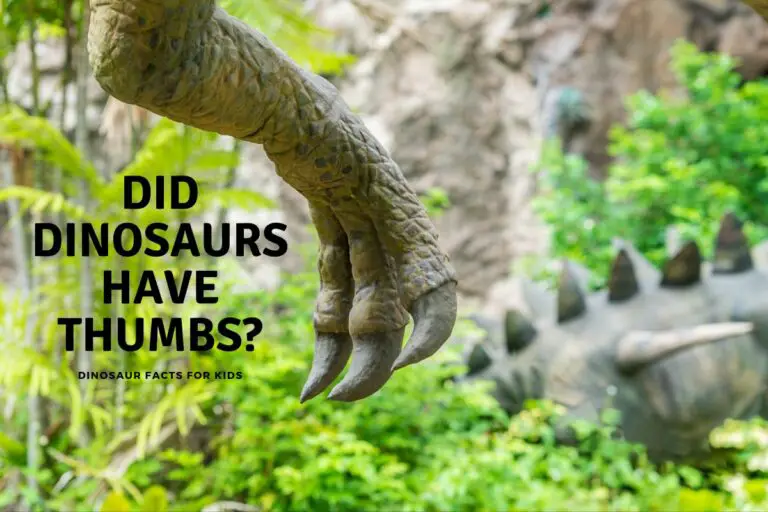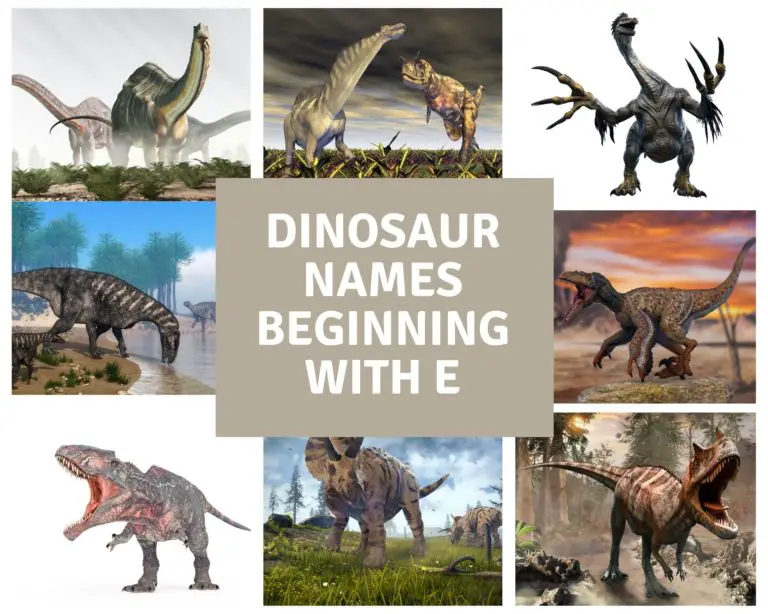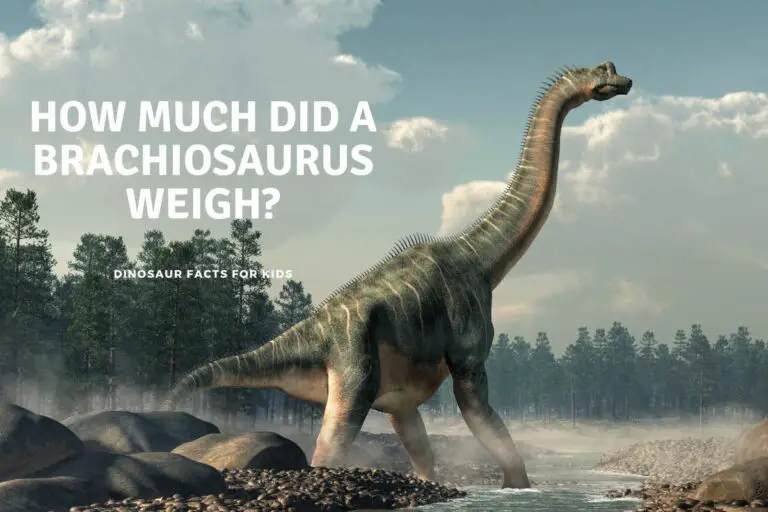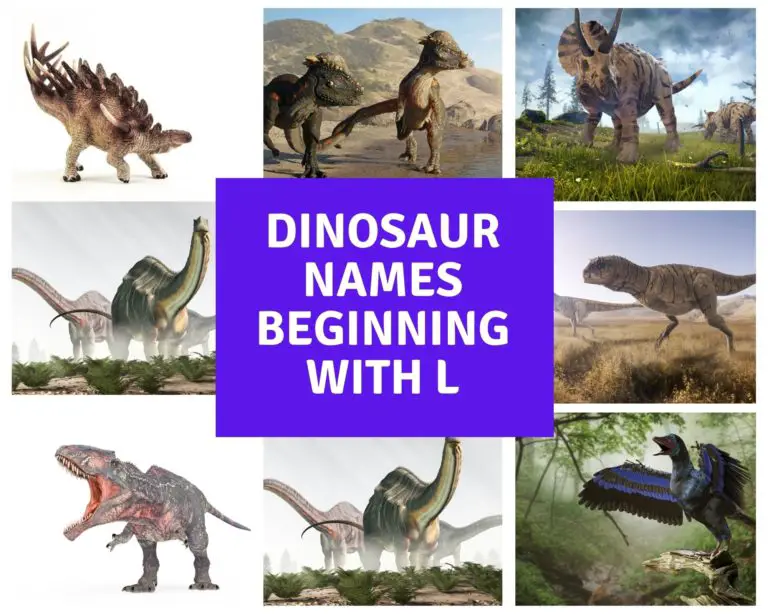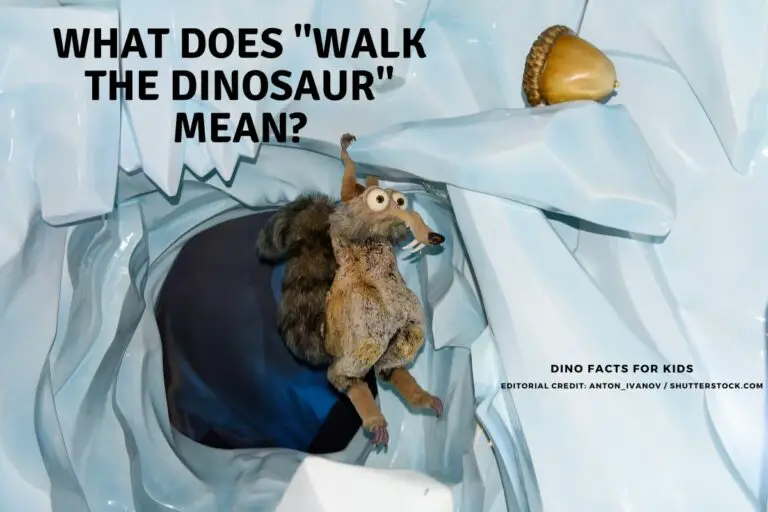What is the Bite Force of a T-Rex?
Tyrannosaurus rex has always been known to be a scary creature with its massive size and sharp teeth that allowed it to eat almost anything it wanted.
When Tyrannosaurus rex was alive, there were no other large predators around, meaning it could just walk into an area and immediately start hunting without having to fight any other predators to get to their prey. This might make you wonder; what exactly is the bite force of a T-Rex?
The bite force of a T-Rex is estimated to be 8-12,000 psi plus, which is more than enough to crush a human skull. This dinosaur had teeth about the size of bananas, and huge jaw muscles which clearly explains why they had such a strong bite force.
Keep reading to learn everything you need to know about tyrannosauruses, how much force their bites had, and how much they could lift.
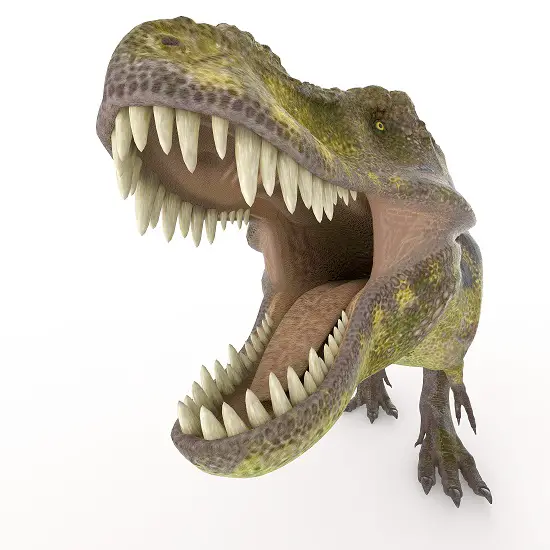
How Strong Is the Bite Force of a T-Rex?
As mentioned earlier, the bite force of a T-rex is an estimated 18,000 psi, which is significantly higher than that of any other terrestrial animal on the planet.
This is due to their enormous body mass and large jaw muscles, which are necessary for them to be able to crush the bones of their prey.
Here is a list comparing different animals’ bite forces to a T-rex’s:
| Animal | Bite Force (in psi) |
| Jaguar | 1,500 |
| Hippopotamus | 1,800 |
| American alligator | 2,125 |
| Saltwater crocodile | 3,700 |
| Nile crocodile | 5,000 |
| T-rex | 18,000 |
This list is intended to give you a perspective of just how strong a T-rex’s bite is compared to other land mammals.
In fact, its bite is strong enough to bite through human bones. Similarly, their jaws are so strong that scientists believe they could even bite through cars.
The T-rex is one of, if not the largest, dinosaurs to ever walk on the face of Earth. It is believed that it used its mouth as a weapon to kill prey and protect itself from other predators.
However, it would not be able to open its mouth all the way unless its jaw muscles were flexible. These muscles are called “semi-rigid,” meaning they can move but only slightly. To make its jaw wider, a T-rex uses its teeth like scissors by opening its mouth and moving its lower jaw from side to side.
This lateral motion also explains why a T-rex’s head is so large compared to its body. A T-rex needs large muscles to be able to move its head. These muscles, found in the back of a T-rex’s neck, are called the neck extensor muscles.
They are much larger in a T-rex than in other animals because it needs them to move its head effectively from one side to the other.
Young T-Rex
Younger T-rexes have also been studied thoroughly and were found to have strong bites as well. Their bites were strong enough to puncture bones.
Researchers have replicated a 13-year-old T-rex and discovered that it has a bite force of 1,270 psi. This particular force comes close to somewhere between a hyena and a crocodile.
Studies have shown that while young T-rexes could not crush bones as well as their much older parents, they were still quickly developing techniques to strengthen their jaws. So, they could bite through harsh surfaces as well as their parents could.
This gives scientists an estimate of how quickly bite forces can develop in T-rexes and makes it easier for them to compare T-rex bodies and how they changed over time. It also gives them an idea of what those creatures were eating and how they lived.
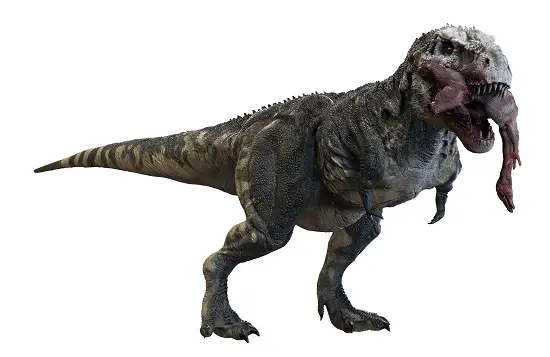
T-Rex Bite Marks
Several experiments were done using metal casts shaped like different dinosaur teeth to figure out how different types of dinosaurs lived, what they ate, and what their predators were.
That being said, paleontologist Joseph Peterson discovered two interesting dinosaur fossils. One was a young T-rex with a bite mark on its head that was clearly caused by another T-rex. This led him to believe that T-rexes, like crocodiles, often liked to play rough.
The punctures in the fossil’s skull were the same shape and size as a young T-rex’s teeth, which are oval and formed in a knife-like cross-section to cut through the meat. Meanwhile, an adult T-rex’s teeth are more rounded and shaped like posts, which helps crush the bone of its prey.
Both adult and young T-rexes often replaced broken teeth with spare ones that were buried in their jaws. These spare teeth emerged in the empty socket once any tooth was broken.
The second fossil discovered was a tail vertebra of an Edmontosaurus dinosaur. This fossil had two punctures resembling those of young T-rexes. He stated that the T-rex probably chewed off the dinosaur’s tail while trying to get to the more meaty part of the animal.
T-Rex vs. Other Dinosaurs
You might now be wondering what other types of dinosaurs existed and how strong their bite force was compared to T-rexes.
The list below shows a comparison among several types of dinosaurs.
| Dinosaur | Bite Force (in psi) |
| Spinosaurus | 4,200 |
| Daspletosaurus | 5,000 |
| Carcharodontosaurus | 5,300 |
| Giganotosaurus | 6,000 |
| Tyrannosaurus Rex | 8-12,000 + |
You’ll notice that T-rex is quite a bit ahead of the pack when it comes to bite force. Not only that, but they also had neck muscles that were about 4 times as powerful as those found in other dinosaurs and 8 times stronger than ours.
It was also heavier and faster than other types of dinosaurs. T-rex could run 12 to 15 mph. It had a long tail that it used as a whip to keep predators away from its vulnerable underbelly. It also had small, sharp claws on its forelimbs that could be used for digging or grabbing prey.
And to many people’s surprise, T-rex was extremely strong. Its arms might be small and short, but its bones were three times thicker than a human’s. Their muscles and tendons helped them hoist 400 pounds.
Conclusion
It is safe to say that T-rexes were one of the strongest animals ever to cross the Earth. From their incredible 12,000-psi bite force to their ability to lift 400 pounds, we can all agree that these magnificent creatures were unique and incredibly interesting to learn about.
References
- https://newatlas.com/t-rex-bite-force/49589/#:
- https://www.npr.org/sections/thetwo-way/2017/05/17/528677883/tyrannosaurus-rexs-bite-force-measured-8-000-pounds-scientists-say
- https://www.labroots.com/trending/plants-and-animals/6141/hard-t-rex-bite
Hi, I am Roy Ford a General Studies and English Teacher who has taught all over the world. What started as a fossil collection became a great way to teach, motivate and inspire students of all ages and all over the world about dinosaurs and from that and children’s love of dinosaurs came the site dinosaur facts for kids, a resource for all ages.

